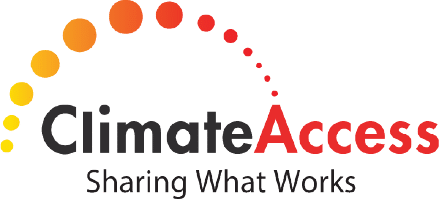A playbook for U.S. candidates, business and civic leaders who are leading on climate and clean energy solutions. The guide offers a three-point narrative structure along with sample speeches and op-eds based on national polling conducted in May 2012 with 1,204 likely voters.
WHY YOU SHOULD TAKE A LOOK:
The climate solutions narrative takes core climate frames and ideas and embeds them into political discourse. While developed for decision-makers, the playbook is useful for advocates, government staff, and other engaging in public debate on climate, particularly because it suggests how to integrate talking points related to current threats (i.e. extreme weather), American innovation, and benefits of action (i.e. money being saved and jobs created); and offers guidance on how to pivot away from common debate challenges. The national poll used to shape the guide further tested the term “climate disruption” and found it to be more effective than using climate change or global warming.
KEY TAKEAWAYS:
1) The poll the playbook is based on found that:
- Voters have taken note of the nation’s unusual and severe weather. While still uncertain about the causes of climate disruption, most recognize it is real.
- Voters are hungry for optimistic solutions and confident leadership to address climate change and clean energy. Two-thirds disagree that nothing can be done and that we can’t afford to act.
-
Voters recognize big fossil fuel companies have unfair influence over energy policies.
2) The poll included further testing of the term “climate disruption” that was first introduced in Climate Crossroads. The findings show it is a more effective term to use than climate change or global warming because it conveys that all of our climate systems and weather patterns are being destabilized.
3) The playbook recommends a narrative structure based on three core elements: Responsibility (we can’t ignore the growing reality of destructive weather and owe it to our kids to protect them) – Patriotic Pride (don’t doubt America’s ingenuity and resolve) – Accountability (put people, not fossil fuel companies back in charge of our democracy).
4) Backing away from job and economic messages is not advised. Leaders who can align clean energy with economic priorities are on solid ground with voters, as long as they integrate these messages into the larger narrative structure outlined above. Response to charges that clean energy costs too much with “What costs too much is what we’re doing now. 1300 counties have been declared disaster areas due to drought, losing billions of dollars in crops, exports, and income. This year’s wildfires have cost us billions more in firefighting and emergency aid. Clean energy is practical, affordable, and inexhaustible – it is the fastest growing energy sector in the world. America has the know-how to power our economy with clean energy – if we break Big Oil’s grip on Washington.”


